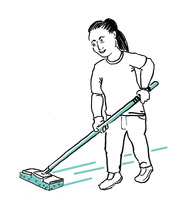2019
‘How Graphic Design Can Help Advance Social Equity In Cities’
Next City
November, 19, 2019
This approach has been championed by organizations such as the Center for Urban Pedagogy (CUP), who produce visual explanations demystifying urban policy issues — from food access to street vending — so that more individuals can better participate in shaping their communities.
‘NYC Teens Share How Criminal Justice System Impacts Their Communities’
Next City
October, 16, 2019
Rivera and Minns were two of the 11 students who participated in a summer employment program at the Red Hook Community Justice Center, the nation’s first multijurisdictional community court. The cohort worked with the Center for Urban Pedagogy, a nonprofit using design and art to explain complex social justice issues, to compose a booklet explaining how criminal conspiracy laws impact New York communities.
‘Sappi’s Ideas that Matter 20th Anniversary’
Sappi
June, 27, 2019
CUP’s Executive Director, Christine Gaspar, was recently featured in a video celebrating 20 years of Sappi’s Ideas that Matter program! Watch the video below to learn about the power of design and the importance of print.
CUP is deeply grateful for the support we’ve received from Sappi over the years that’s helped us reach communities throughout New York around issues of fracking, zoning, and tenants’ rights.
Applications for the 2019 Ideas that Matter program are open here until July 31st — we promise it’s worth it.
‘Housing Update: Homelessness Record, Rent Regs Debate Intensifies’
City Limits
May, 3, 2019
The Department of Housing Preservation and Development has anew commissioner. Until last year, Louise Carroll had worked at HPD for 12 years, most recently overseeing the tax incentives program. The New York Post reports that NYCHA cut down more than 200 trees at the Baruch Houses on the Lower East Side. Residents were upset. According to NYCHA, deforestation is part of Hurricane Sandy recovery and repair efforts and the trees will be replaced. The Center for Urban Pedagogy along with several partners has launched a campaign educating tenants about how to report landlord harassment.
‘华埠监狱环境报告将公布(图)’
US China Press
March, 8, 2019
城市教育中心(Center for Urban Pedagogy)项目经理托瑞(Mark Torrey)介绍, ULURP是纽约市区划制度的运作核心, 任何与当前区划不一致的开发提议都必须申请进行ULURP。ULURP是一个标准化的流程,其目的是让影响城市土地使用的项目申请通过公众参与的审核。该过程主要包括申请、认证及各部门的审查。纽约宪章也规定了该流程中各部分的决策时间。ULURP主要的参与包括市规划局、市规划委员会、社区委员会、区长、区委员会、市议会及市长。
‘Fast facts about ULURP’
Brooklyn Daily Eagle
March, 8, 2019
Another thing that triggers the ULURP process is a proposal from the Department of City Planning or a different city agency to change the zoning in an entire neighborhood.Big drama can break out when neighborhood residents object to ULURP plans. There’s fiery testimony at public hearings. Community groups organize protests.The ULURP process takes several months — and often upward of a year for larger projects.We’ve synthesized our description of how it works with the help of materials from the DCP’s website and the “What is ULURP? Guidebook,” published by the Center for Urban Pedagogy.














